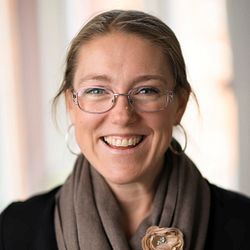
News -
How fibreglass protects your house!
Fibreglass is used to protect what’s most important to many of us: our homes. It’s a strong and durable nonwoven especially used in construction materials as it withstands really harsh conditions.
Mostly all functioning modern houses are truly great inventions. They are places where we can live our life with friends and families, having dinner, sleeping and watching Netflix protected from nearly whatever weather is raging outside.
Externally, a house withstand sunlight, rain, wind and, in some parts of the world, snow. Internally we need electricity and water, both whom can be harmful to the building and ourselves if not installed professionally.
Fibreglass is a material that the constructions industry is using widely in order to help people stay warm and dry in their homes. It’s truly a great material in that sense. How?
Fibreglass has minimal elongation, which means that it stays in the same dimension without stretching. It means that you can trust the size and form of it in a larger extent than many other construction materials. This makes it widely used as a stabilizer in construction materials for flooring, roofing and wallboards.
It also has high tensile strength which is a measurement of the strength you need to apply to pull a material apart. This can of course be controlled through the thickness of the material and which fibres are used upon production. Strength is also appreciated with in construction. Fibreglass is therefore used to stabilize and reinforce concrete.
Fibreglass is totally waterresistent as it in nonorganic. It resists and won’t absorb water which is one of the properties making this material widely used both internally and externally on buildings as a moisture barrier. But the material can also be produced to let water through.
Fibreglass has a high resistance to both heat and the effects of sun rays. Why exterior construction and roofing product needs to withstand sunrays that easily deteriorate most materials might speak for itself. It also has a high resistance to heat.
Fibreglass is often coated with other materials to create desired properties. As an example it is often coated with asphalt for roofing products.
What exactly is fibreglass?
Fibreglass is a nonwoven material where cut fibres of glass, mix them with a binding agent and allowed to dry in an oven. There are different types of fiberglass with different properties. Examples include S-glass, C-glass and E-glass. These have different properties in terms of resistance to chemicals, strength, material costs, etc. To create different properties, it’s also possible to add plastics, such as polyester.
On our website you can read more about fibreglas, about nonwoven for construction or order samples You can also contact us at info@nonwoven.com


